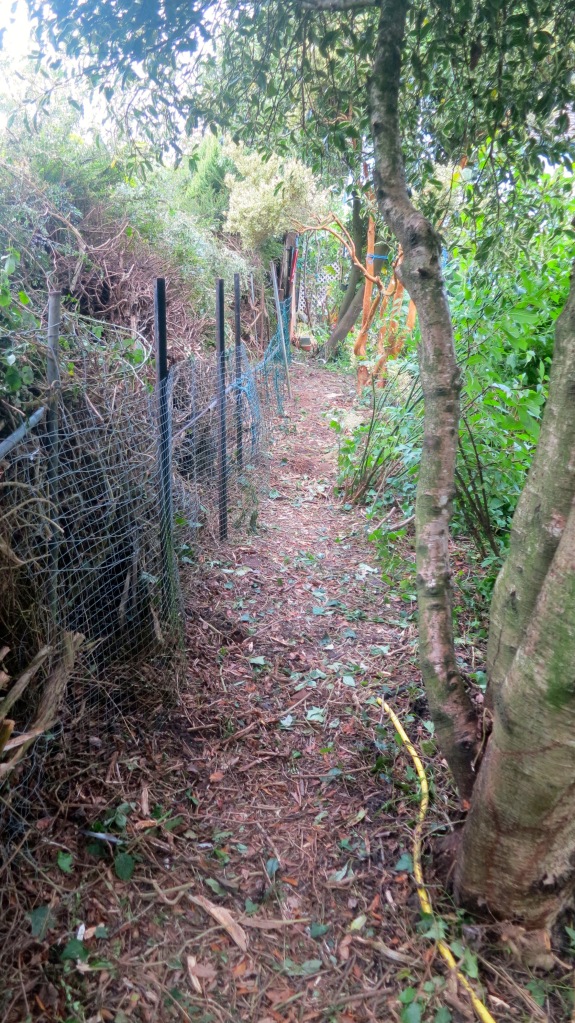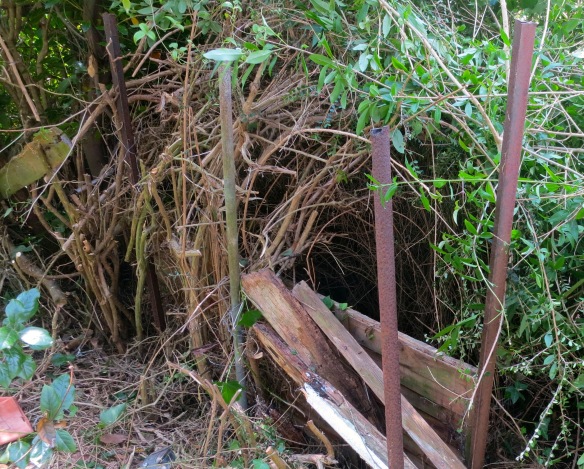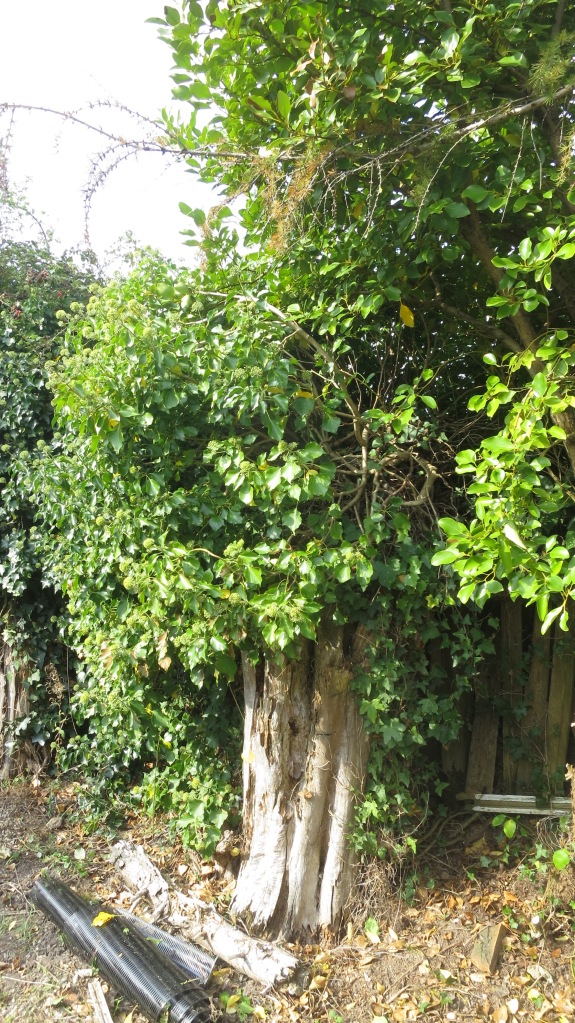‘Boundary’ is a polite term for what should have separated our garden from that of ‘North Breeze’, the unoccupied house to the west of ours. It stretches from front to back from the street to the corner of the back drive and most of the way down that.
I learned this when the Head Gardener decided to hack through the undergrowth on that side of our brick path. Until then I had enjoyed a short-lived oblivion.
I began on the section adjacent to the patio. This is what I found on 26th May 2014. The lonicera hedge had romped with brambles over and through the bits and pieces that were meant to divide the gardens, rooted on our side, and sent further stems to settle further in. I really rather wanted to go home, until I remembered I was already there.
By 1st June I had cut my way to a length of strong wire. I still had to dig out the root shown on our side.
There was quite a lot of netting lying around the garden. We gathered this up and the next day I reinforced what I could make out of the dividing line. I could now see where I had come from, if not yet where I was going.
The day after that, mother nature granted me a respite, in the form of a blackbird’s nest, complete with eggs. I clearly could not disturb this any more than I had done already. I waited patiently for another couple of weeks whilst the parent incubated her offspring. Then a magpie struck. This story was not inspired by Bruce Goodman, although I trust that fine storyteller would approve of it.
On 21st July, I continued my makeshift fence with discarded IKEA wardrobe sections.
I had reached the far corner, and was about to turn into the back drive. Oh, joy.
Brambles and ivy proliferated, even rooting in the line of dead stumps, and, of course, across the drive itself.
Wire netting had become entwined with the infiltrators. The iron stake in the bottom left of this photograph was one of two rows each of four lining either side of the drive.
They were deeply buried in concrete, so I had to hacksaw most of them off.
Having reached the five-barred gate at the far end on 16th October I made a photograph showing the lopping of the griselinia and the rooting out of brambles.
I stayed inside today, whilst Jackie continued her sterling clearance work.
For the first dinner I have been able to face in two days, I opted for a bacon sandwich which I enjoyed. I required no liquid sustenance. How long, I wonder, will an opened bottle of malbec stay potable? Fortunately there was still some curry left for The Cook,



























